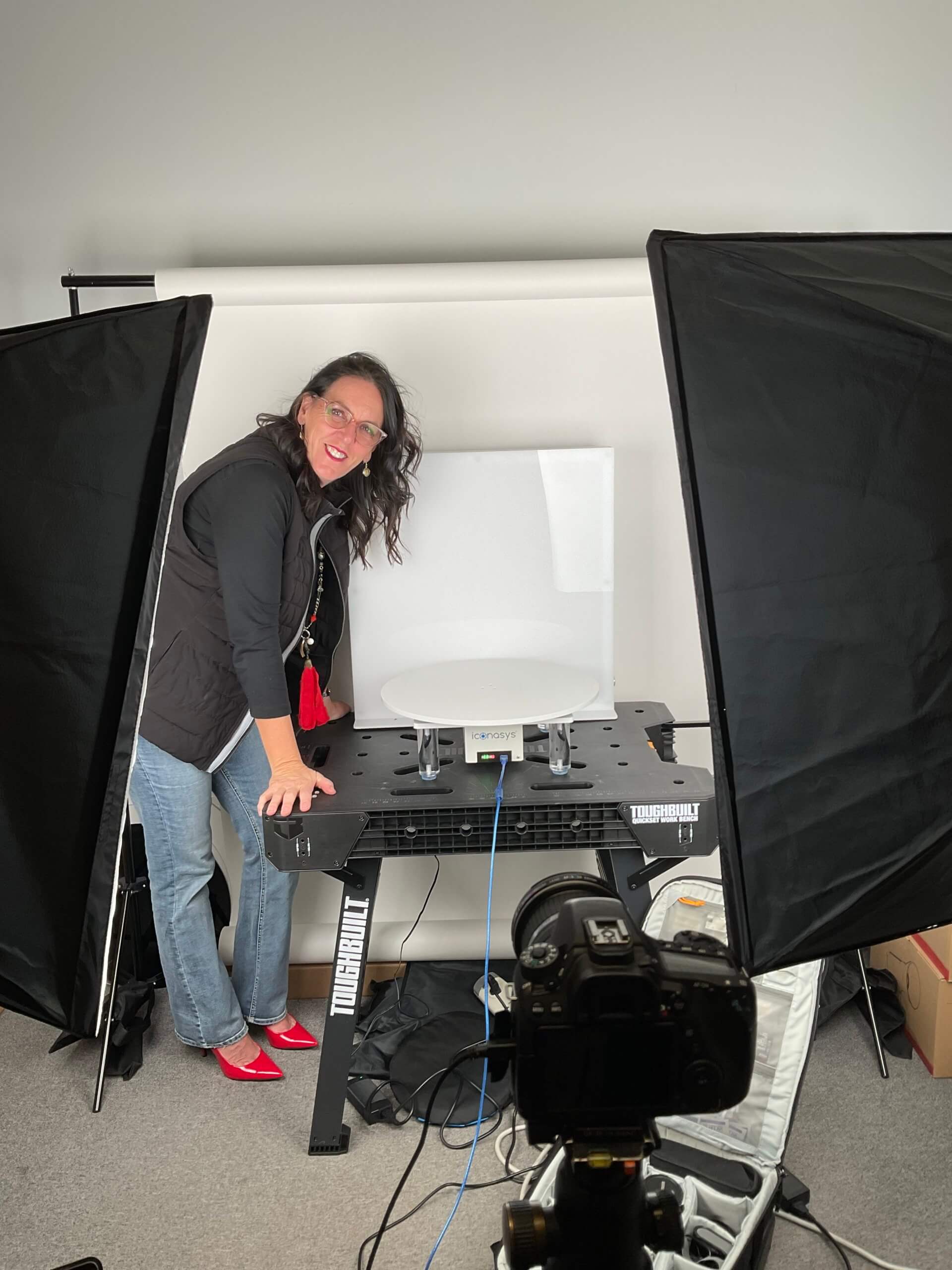When Greg graduated from photography school in 1999, his first job was doing product photography for catalogs. Back in the olden days, brands relied heavily on paper catalogs to showcase their products. But as the world moved online, product photography evolved to meet the demands of e-commerce.
Fast forward to today, and product photography has come a long way, with innovative systems like Iconasys leading the charge with a cutting-edge 360-degree product photography system. That’s why when Greg saw the Iconasys system, he recognized that this innovative product photography solution was a perfect complement to the type of business we wanted to build.
Traditional vs. 360-Degree Product Photography
Product photography has become an essential component of e-commerce, and with the growing demand for online shopping, it has become more important than ever before. As a result, businesses are looking for innovative ways to showcase their products to their online customers. One such way is through 360-degree product photography, which provides a more immersive and interactive experience for customers. In this blog post, we will explore the process of creating 360-degree product photography and how it differs from traditional product photography.
Traditional Product Photography
Traditional product photography involves taking a single image of the product from a specific angle. The photographer needs to capture the product’s most important features and convey its look and feel to the customer via a static still image. The lighting, camera angle, and composition are essential in traditional product photography to showcase the product in the best possible way. However, it does not provide a complete view of the product, and customers can only see it from one angle.
360-Degree Product Photography
360-degree product photography, on the other hand, provides a complete view of the product from every angle. This type of photography is accomplished by taking a series of photographs of the product from different angles and then stitching them together to create a 360-degree view. This allows customers to see the product from all angles, including top, bottom, and sides, providing a more immersive and interactive experience.
The Process of Creating 360-Degree Product Photography

The process of creating 360-degree product photography involves several steps.
Step 1: Set Up
First, the product is placed on a turntable, which is rotated by a motor. The camera is then positioned at a fixed distance from the product and takes a series of photographs as the turntable rotates. The photographs are taken at equal intervals to ensure that every angle of the product is captured.
Step 2: Editing
Once the photographs are taken, they are then edited and stitched together using specialized software to create a 360-degree view of the product. The final result is a high-quality image that can be embedded on the website or used for marketing purposes.
Benefits of 360-Degree Product Photography
360-degree product photography provides several benefits over traditional product photography. Firstly, it provides customers with a more immersive and interactive experience, allowing them to see the product from every angle. This can help increase customer engagement and reduce the likelihood of returns or dissatisfaction due to incorrect expectations.
Additionally, 360-degree product photography can also help businesses stand out from their competitors. It provides a unique and innovative way to showcase products, which can help increase brand recognition and loyalty. It can also provide a competitive advantage in the crowded e-commerce space, where businesses are constantly looking for ways to differentiate themselves.
Conclusion
In conclusion, 360-degree product photography is a powerful tool for businesses looking to showcase their products online. By providing customers with a complete view of the product, it can increase engagement, reduce returns, and help businesses stand out from their competitors. By adding more information about the process of creating 360-degree product photography and how it differs from traditional product photography, businesses can help potential clients understand the value of the service even more.
We are excited to offer this type of photography to the already robust catalog of approaches!
Leave a Reply